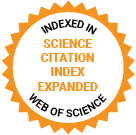Journal of Medical Internet Research
The leading peer-reviewed journal for digital medicine and health and health care in the internet age.
Editor-in-Chief:
Gunther Eysenbach, MD, MPH, FACMI, Founding Editor and Publisher; Adjunct Professor, School of Health Information Science, University of Victoria, Canada
Impact Factor 5.8 CiteScore 14.4
Recent Articles

Social anxiety disorder is a common mental health condition characterized by an intense fear of social situations that can lead to significant impairment in daily life. Cognitive behavioral therapy (CBT) has been recognized as an effective treatment; however, access to therapists is limited, and the fear of interacting with therapists can delay treatment seeking. Furthermore, not all individuals respond. Tailoring modular treatments to individual cognitive profiles may improve efficacy. We developed a novel digital adaptation of CBT for social anxiety that is both modular and fully digital without a therapist in the loop and implemented it in the smartphone app Alena.

Micronutrient deficiencies in folate, ferritin, calcium, and vitamin D are common during pregnancy in low- and middle-income countries, often due to inadequate diets. Micronutrient supplementation can address this need, whereas innovative awareness strategies in antenatal practices could enhance supplement use compliance.

As artificial intelligence (AI) permeates the current society, the young generation is becoming increasingly accustomed to using digital solutions. AI-based medication counseling services may help people take medications more accurately and reduce adverse events. However, it is not known which AI-based medication counseling service will be preferred by young people.

Considering that most patients with low or no significant risk factors can safely undergo noncardiac surgery without additional cardiac evaluation, and given the excessive evaluations often performed in patients undergoing intermediate or higher risk noncardiac surgeries, practical preoperative risk assessment tools are essential to reduce unnecessary delays for urgent outpatient services and manage medical costs more efficiently.

Information distortion in nursing records poses significant risks to patient safety and impedes the enhancement of care quality. The introduction of information technologies, such as decision support systems and predictive models, expands the possibilities for using health data but also complicates the landscape of information distortion. Only by identifying influencing factors about information distortion can care quality and patient safety be ensured.

Self-recording is an effective behavior change technology that has long been used in diverse health contexts. Recent technological advancements have broadened its applications. While previous studies have explored its role and benefits in enhancing self-awareness and informed decision-making, relatively little attention has been given to its potential to address the multidimensional nature of health with various health metrics.

Health coaching refers to the practice of health education and promotion to drive goal-directed behavioral changes and improve an individual’s well-being. Remote patient monitoring systems, which employ health coaching interventions, have been gaining interest and may aid in the management of patients with type 2 diabetes mellitus (T2DM).

An estimated 93% of adults in the United States access the internet, with up to 80% looking for health information. However, only 12% of US adults are proficient enough in health literacy to interpret health information and make informed health care decisions meaningfully. With the vast amount of health information available in multimedia formats on social media platforms such as YouTube and Facebook, there is an urgent need and a unique opportunity to design an automated approach to curate online health information using multiple criteria to meet the health literacy needs of a diverse population.

Ransomware attacks on health care provider information systems have the potential to impact patient mortality and morbidity, and event details are relayed publicly through news stories. Despite this, little research exists on how these events are depicted in the media and the subsequent impacts of these events.
Preprints Open for Peer-Review
Open Peer Review Period:
-



















